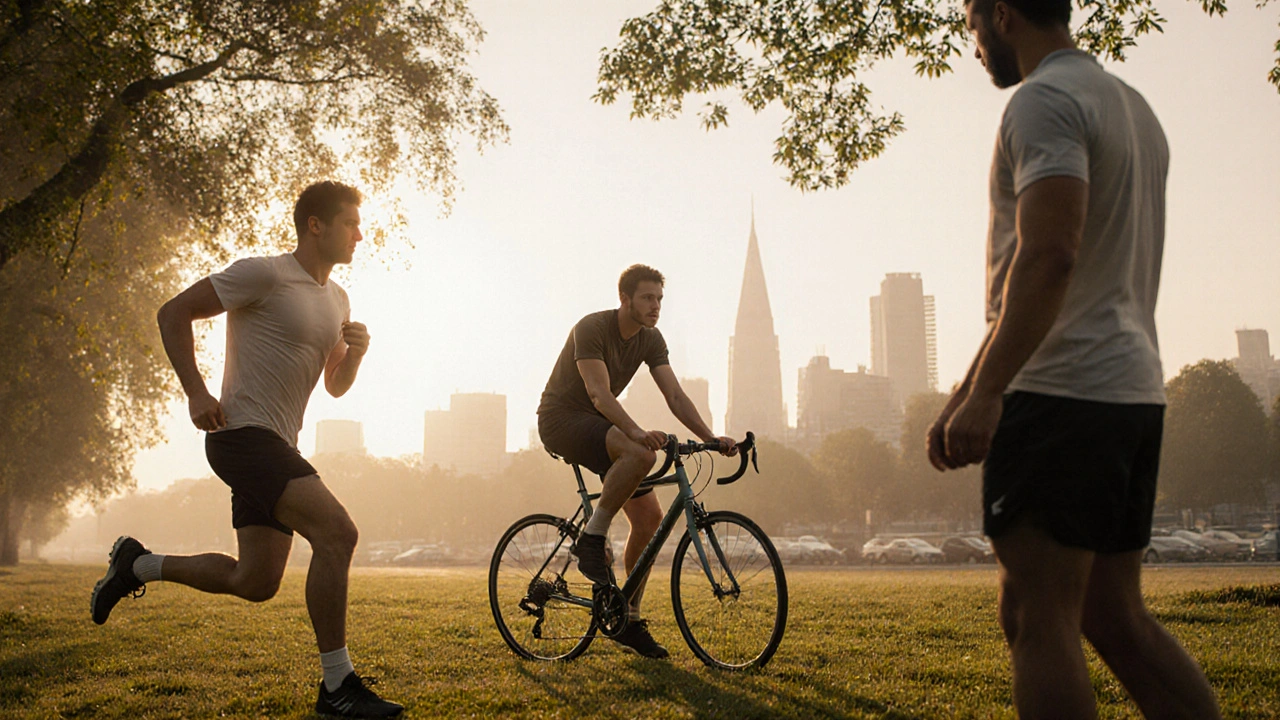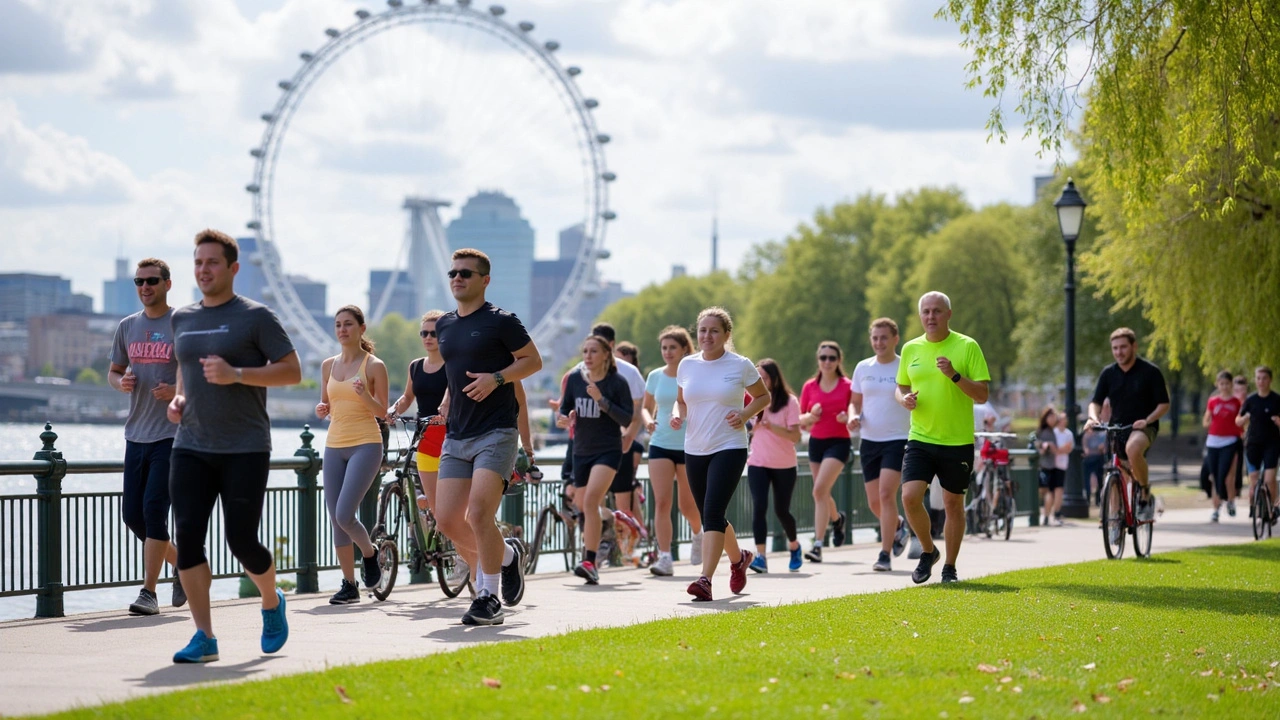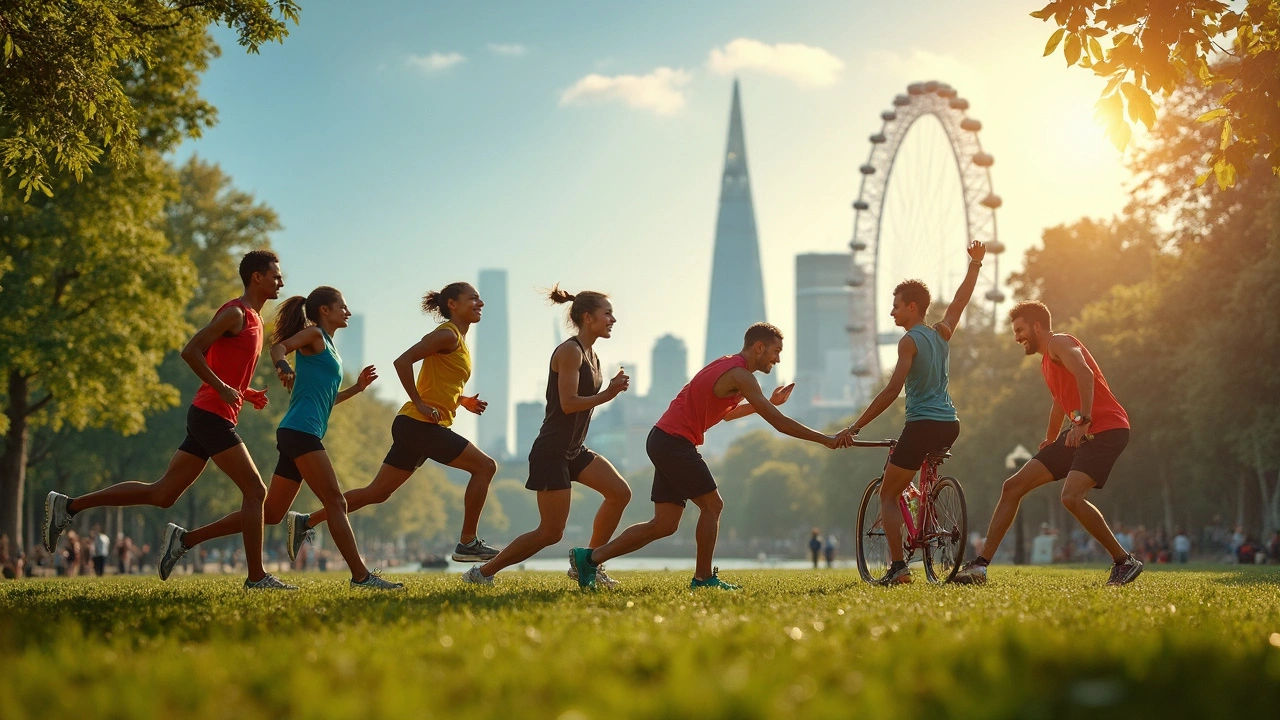Sports Massage London: Your Secret Weapon for Injury Prevention
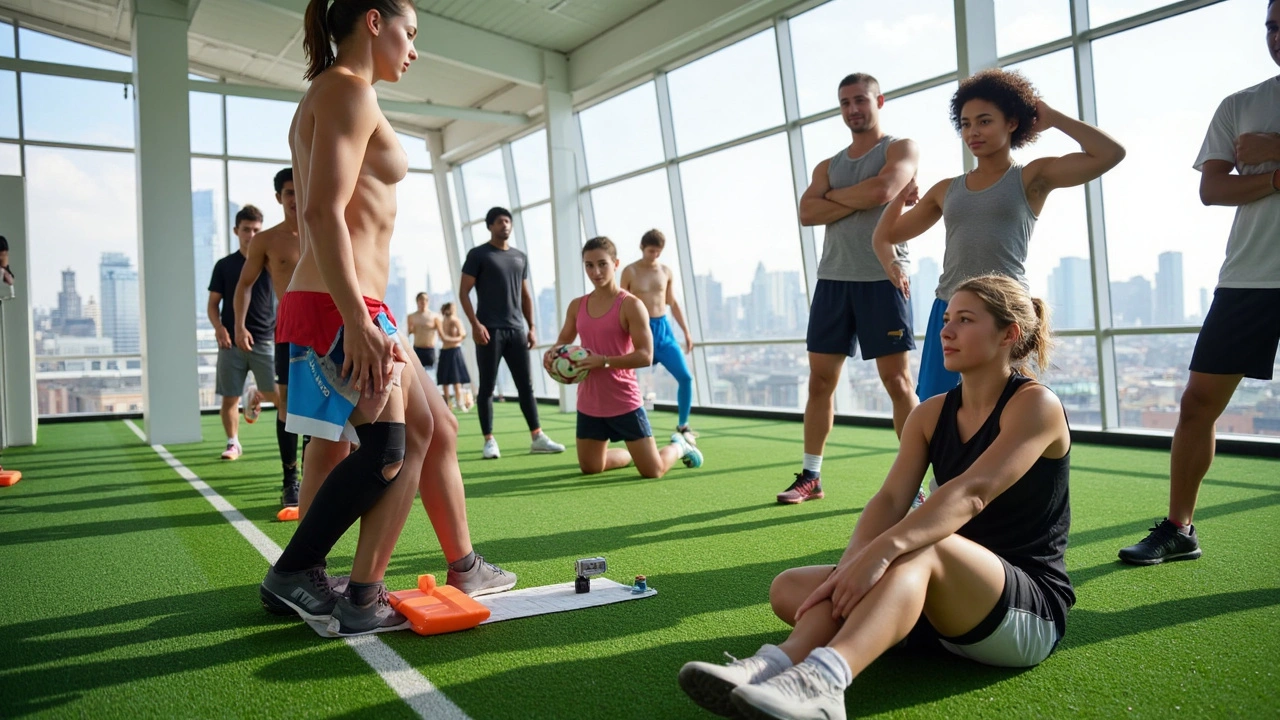
Cracked shins. Tweaked shoulders. Tight hamstrings that won’t quit. If you play sports in London—whether you’re a weekend footballer or doing laps around Hyde Park—injuries are just waiting for a slip-up. Here’s the thing: sports massage isn’t just some posh relaxation treat. It’s the practical move more and more London athletes use to stay off crutches and in the game.
Ever wonder why your teammate bounces back from a knock so quickly? They’re likely regulars at a sports massage clinic. Science backs it up—massage breaks down scar tissue, pushes out lactic acid, and gets blood flowing to spots that need it most. The goal: less downtime, fewer mystery aches, better performance every week.
- Why Sports Massage Matters for Preventing Injuries
- What Happens During a Sports Massage Session?
- Top Benefits Beyond Relaxation
- Real-World Injury Stories from London Athletes
- How to Choose a Skilled Sports Massage Therapist
- Tips for Making Sports Massage Work for You
Why Sports Massage Matters for Preventing Injuries
There’s no magic bullet for never getting hurt, but sports massage comes pretty close to giving you an edge. Whether you play rugby, run 10ks, or spend weekends spinning at boutique gyms, your muscles and joints are taking a real beating. Sports massage targets those deep muscle layers and tight spots before they turn into pulled muscles or nagging strains.
Here’s a not-so-fun fact: up to 50% of amateur athletes in London miss at least one session every season due to avoidable injuries. Most of these come down to muscles that are overused, too tight, or simply ignored when it comes to recovery. Regular sessions help spot trouble before it escalates. You might feel fine now, but those knots and subtle imbalances could turn into something that sidelines you for months.
What exactly does a sports massage London approach do for prevention? Check out these core benefits:
- Tackles tight spots in muscles and connective tissue, stopping injuries before they start.
- Breaks down scar tissue from old injuries so you move better—and safer.
- Speeds up recovery by boosting blood flow, which brings nutrients to muscles right when they need it.
- Keeps your joints moving the way they should, which can stop dodgy knees or inflamed ankles before they ruin your plans.
Here’s a quick look at what athletes get out of routine sports massage, according to research from sports clinics in London:
| Benefit | How Many See Improvement (%) |
|---|---|
| Muscle Flexibility | 87% |
| Reduced Injury Risk | 73% |
| Faster Recovery After Workouts | 81% |
| Pain Reduction from Micro-Tears | 68% |
So, if you’re trying to stay pain-free and active, sports massage isn’t just a nice-to-have—it’s turning into part of the playbook for anyone serious about keeping their body sharp. Most pros in London book regular sessions as a non-negotiable step, not only after an injury, but to avoid them in the first place.
What Happens During a Sports Massage Session?
Walk into a sports massage clinic in London and don’t expect spa music or scented candles. This is hands-on, practical work. The therapist kicks things off with a chat about your activity level, old injuries, and what aches today. No cookie-cutter approach—they’ll target your sport and routine.
After you hop on the treatment table, here’s what usually goes down:
- Assessment: The therapist finds sore spots, tight muscle groups, and even checks your movement pattern with a few simple stretches.
- Deep tissue massage: Expect elbow and thumb pressure—sometimes pretty firm—on problem areas. This helps break down scar tissue and knots.
- Trigger pointing: If you flinch, that’s a knot. Therapists hold pressure there until it lets go. Feels weird, but it works.
- Stretching and mobility work: Some therapists move you through stretches to lengthen tight spots, boost range of motion, and reduce stiffness.
- Advice for aftercare: Hydration, rest, and maybe a few simple home techniques like foam rolling or hot/cold packs.
Sessions typically last between 30 and 60 minutes. You stay clothed except for the area being treated. Athletes in London usually go every 1-3 weeks, based on training and competition schedule.
Check this out—recent clinic stats from 2024 show the average reduction in muscle tightness and pain after a proper sports massage:
| Body Area | % Reported Improvement | Common for... |
|---|---|---|
| Hamstrings | 60% | Runners, footballers |
| Shoulder/Upper back | 65% | Swimmers, tennis players |
| Calves | 55% | Sprinters, cyclists |
| Lower Back | 70% | Rowers, powerlifters |
The goal here isn’t just to chill out. It’s to put you a step ahead of those aches and injuries that slow you down. If you take your sport seriously, a sports massage London session is more like regular kit than a luxury.
Top Benefits Beyond Relaxation
Most people think booking a sports massage London session is just about chilling out, but honestly, the real perks go way beyond feeling loose. We're talking about real changes in how your body holds up, how it repairs, and even how you perform week after week. Check this out:
- Less injury risk: Massage helps muscles recover faster after training, breaking up knots and tight spots before they become huge problems. If you’re always pushing yourself, that kind of regular maintenance makes you less likely to pull a muscle or strain a ligament.
- Better flexibility: You ever tried stretching a tight calf and it just wouldn't budge? Sports massage works deeper than your average stretch, releasing stuck muscles and boosting your range of motion.
- Faster recovery: Studies from the British Journal of Sports Medicine have shown that massage after intense activity can slash DOMS (delayed onset muscle soreness) by up to 30%. That means less hobbling down stairs after leg day.
- Improved circulation: Increased blood flow means more oxygen and nutrients hit your muscles. That helps with both faster recovery and less swelling or bruising after a hard game.
- Better mind-body connection: Sounds soft, but it’s real. Regular massage can dial down anxiety and help you tune in to what your body really needs, making you more aware of little tweaks before they turn into serious pain.
A local physio who works with semi-pro rugby players puts it like this:
“The biggest mistake people make is waiting until they’re hurt. Regular sports massage is one of the smartest investments you can make if you want to keep playing and avoid the physio’s table.”
Here's a quick look at what people are actually getting from consistent sports massage in London:
| Benefit | % of Athletes Reporting Improvement (2024 Survey) |
|---|---|
| Faster Recovery After Matches | 78% |
| Reduced Injury Frequency | 74% |
| Better Flexibility | 69% |
| Less Muscle Soreness | 82% |
The proof is in the stats and on the field. Next time you think massage is just a fancy way to kill an hour, remember—not doing it could keep you sidelined a lot longer.
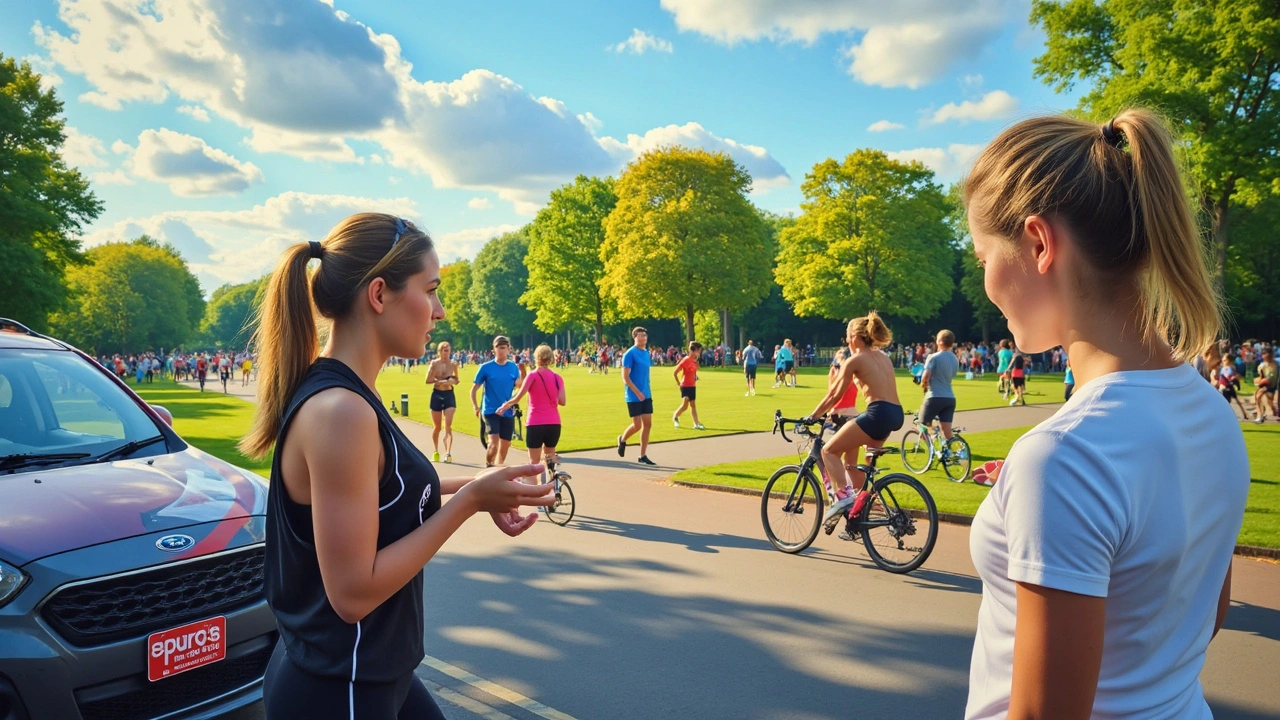
Real-World Injury Stories from London Athletes
The proof is in the stories. Ask around in London’s gyms, football pitches, or running clubs, and you’ll hear the same thing—sports massage has kept a lot of people off the injury list. Take the example of Lucy, a semi-pro footballer from North London. Two years back, she tore her calf at training. Before, she’d push through the pain and hope for the best. This time, she booked a course with a local therapist. She noticed not just faster healing, but fewer recurring niggles compared to past seasons. Now, Lucy gets a sports massage at least every two weeks when she’s in-season.
Then there’s Rob, a marathon runner from Hackney. Before his first big race, he pulled a hamstring and thought he’d have to skip the London Marathon. His physio recommended a sports massage routine alongside strengthening drills. After three targeted sessions, Rob noticed improved flexibility—and, maybe more importantly, confidence to push hard again. He finished his race without any muscle flare-ups.
These aren’t one-off stories. A 2022 survey published by the UK’s Sports Therapy Association found that 61% of London-based competitive athletes credited regular sports massage as a top factor in their injury prevention plan. Most said it worked better than foam rolling or static stretching alone.
| Source | What They Did | Injury Outcome |
|---|---|---|
| Lucy (Footballer) | Weekly sports massage post-injury | Faster recovery, fewer relapses |
| Rob (Runner) | Pre-race massage + rehab | Successful marathon, no flare-up |
| Sports Therapy Association Survey | 200+ athletes, 12 months | 61% rated massage as #1 for prevention |
If you think about skipping your next sports massage London session, remember these examples. Catching small issues early is what stops a niggle from turning into months off. Real athletes here have seen the results firsthand—sometimes all it takes is one smart routine to keep you moving.
How to Choose a Skilled Sports Massage Therapist
Picking the right person for your sports massage London session can be the deal-breaker between getting back on the pitch and sitting on the sidelines with another injury. Not all therapists are created equal, and flashy social media ads don’t tell the whole story.
First, check if the therapist has real credentials. In the UK, look for membership in bodies like the Sports Massage Association (SMA) or the Complementary & Natural Healthcare Council (CNHC). Many top clinics list qualifications up front on their websites—don’t be shy to ask if you don’t see them.
Experience matters, too. Someone who’s worked with footballers, marathon runners, or rugby players will have a solid grip on specific injury patterns and recovery needs. Ask if they’ve handled cases similar to yours—most pros are happy to share their background.
Don’t get fooled by price alone. In London, a session can range from £50-£120 depending on the clinic, credentials, and even the area (Central London will sting the wallet more than an out-of-town studio). But cost doesn’t always reflect skill. What counts is whether the therapist tailors the treatment to your sport and body.
- Read reviews from people with your sport or injury type. Generic praise doesn’t always cut it.
- Ask about their approach to injury prevention, not just treatment.
- See if they offer advice for stretching, warmups, or post-session care—it shows they care about your full recovery.
- If something feels off during the session, speak up. A skilled therapist will listen and adjust.
For a quick snapshot, here’s what a skilled sports massage therapist usually brings to the table in London:
| What to Look For | What It Means |
|---|---|
| Regulated qualifications (like SMA, CNHC) | They’re trained to UK standards, not self-taught. |
| Experience with athletes | They understand sports injuries, not just relaxation techniques. |
| Clear communication | They discuss the plan and listen to your injury concerns. |
| Personalised treatment | Treatment fits your sport, build, and goals—not a one-size-fits-all session. |
Last thing: London has hundreds of choices, but a great sports massage therapist isn’t just a nice-to-have—they’re a key part of keeping you moving, competing, or pain-free on the daily commute.
Tips for Making Sports Massage Work for You
Nailing down the benefits of sports massage London isn’t just about booking a session—it’s about when, how often, and what you do before and after. Here’s how to get the most value out of every visit, whether your goal is to dodge injuries, boost your energy, or recover faster.
- Consistency is key: Experts say that regularity beats intensity. Booking a massage once every 2-4 weeks can help your body adapt, especially if you’re training hard or ramping up for an event.
- Communicate with your therapist: Don’t just nod politely—tell your therapist about old injuries and any issues you feel lately. A targeted session can pick up imbalances that might turn into proper injuries down the road.
- Pre-game and post-game: If you’re competing, aim for a lighter session two days before an event to loosen up—deeper work can be left for after. Post-game massages are great for flushing out lactic acid and lowering muscle soreness.
- Don’t skip hydration: Massage moves fluid and toxins through your muscle tissue. Drink more water than usual after your session to help your body process all of it faster.
- Move afterwards: It’s tempting to flop on the sofa after a massage, but gentle movement (think: walking or light stretching) can help the benefits last longer.
"Consistency with sports-specific massage is as important as strength training for injury prevention," says Dr. Emily Saunders, lead physiotherapist for one of London’s largest athletics clubs. "Athletes who build massage into their routine cut their muscle strain risk by up to 30%."
Here’s a quick breakdown of how regular sports massages impact injury rates, based on recent clinic stats around London:
| Massage Frequency | Muscle Injury Rate | Reported Recovery Time |
|---|---|---|
| Every 1-2 Weeks | Low (5%) | 2-5 Days |
| Monthly | Medium (15%) | 6-10 Days |
| Sporadic (Less than Monthly) | High (27%) | 10+ Days |
The message? Don’t leave massage as a last-ditch fix. Build it into your gameplan and your tissue is less likely to let you down when you need it most.

